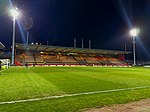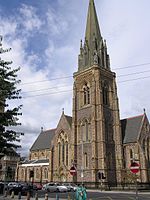Stockline Plastics factory explosion
2000s in Glasgow2004 disasters in the United Kingdom2004 in ScotlandDisasters in GlasgowExplosions in 2004 ... and 9 more
Explosions in ScotlandHistory of GlasgowIndustrial fires and explosions in the United KingdomMaryhillMay 2004 events in the United KingdomPublic inquiries in ScotlandUse British English from June 2014Wikipedia external links cleanup from January 2015Wikipedia spam cleanup from January 2015
On 11 May 2004, the ICL Plastics factory (commonly referred to as Stockline Plastics factory), in the Woodside district of Maryhill, Glasgow in western Scotland, exploded. Nine people were killed, including two company directors, and 33 injured, 15 seriously. The four-storey building was largely destroyed.
Excerpt from the Wikipedia article Stockline Plastics factory explosion (License: CC BY-SA 3.0, Authors).Stockline Plastics factory explosion
Grovepark Street, Glasgow Oakbank
Geographical coordinates (GPS) Address Nearby Places Show on map
Geographical coordinates (GPS)
| Latitude | Longitude |
|---|---|
| N 55.8755 ° | E -4.2685 ° |
Address
Grovepark Street
Grovepark Street
G20 7NZ Glasgow, Oakbank
Scotland, United Kingdom
Open on Google Maps










